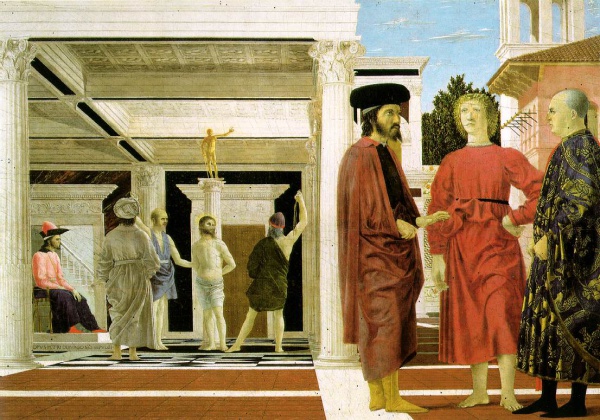Facts About Flagellation of Christ
"The Flagellation of Christ" by Piero della Francesca is a celebrated masterpiece housed in the Galleria Nazionale delle Marche in Urbino, Italy. Renowned for its intricate and unconventional composition, the painting has sparked various theories about its symbolism. Esteemed art historian Kenneth Clark once hailed it as "the greatest small painting in the world."
The artwork depicts the biblical scene of Christ being scourged by the Romans, set within an open gallery. Intriguingly, three figures in the foreground appear completely unaware of the dramatic event unfolding behind them. The painting is lauded for its impeccable use of linear perspective, serene atmosphere, and geometric precision. Piero della Francesca even signed the piece beneath the figure of the seated emperor.
Scholars have long debated the painting's meaning, particularly the identities and significance of the figures. Some believe it carries political or dynastic symbolism, while others suggest it may be an allegory for contemporary events of the time. Theories have connected the painting to Byzantine history, the fall of Constantinople, and the Council of Mantua.
One interpretation suggests that the figures represent historical personalities from Urbino, possibly celebrating dynastic events or conveying political and theological messages. Another theory posits that the painting symbolizes hope for the future or mourns past historical tragedies.
"The Flagellation of Christ" has influenced not just art history but modern literature as well. Its formal purity and restraint have resonated with admirers of Cubist and Abstract art. Many art historians regard this painting as one of Piero's most significant works, capturing the essence of the Renaissance. Its lasting impact is evident in its frequent mention in literary works, underscoring its enduring legacy in the art world.

 Slovenia
Slovenia